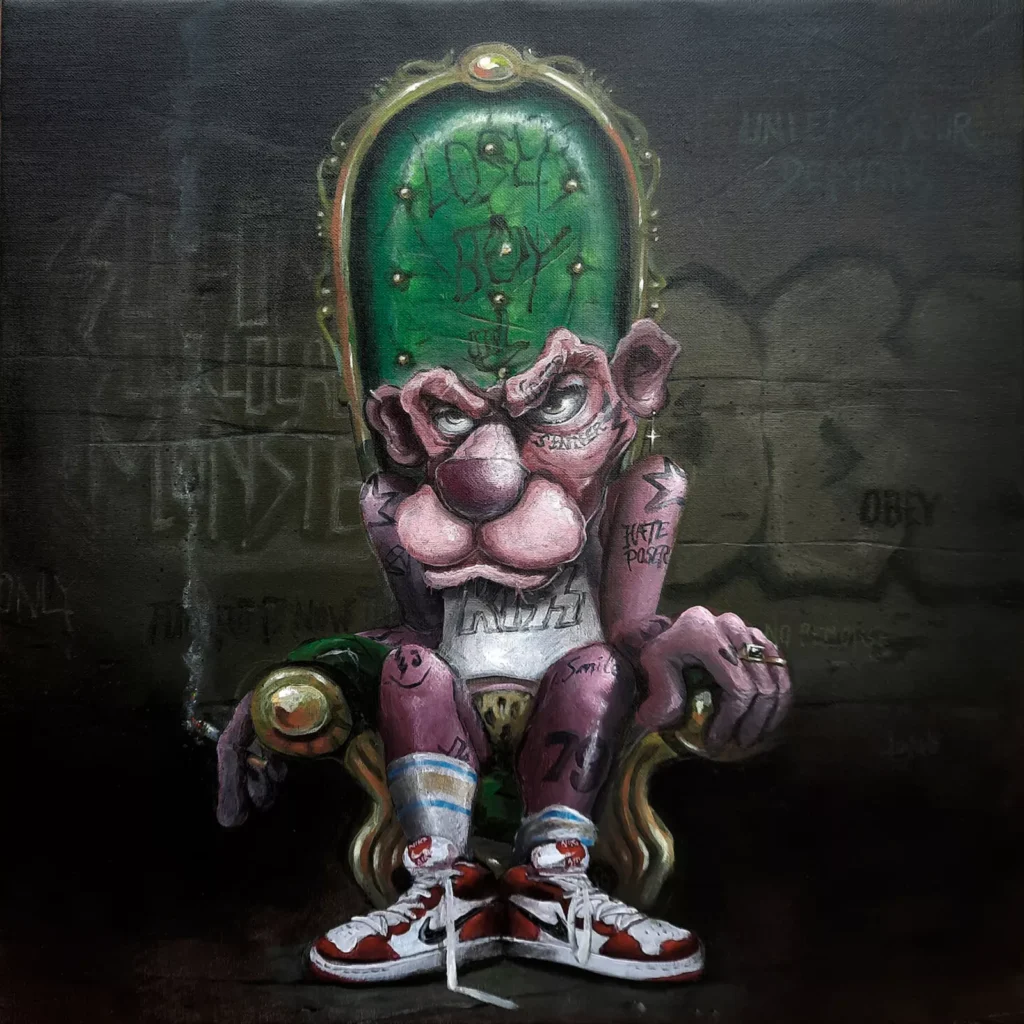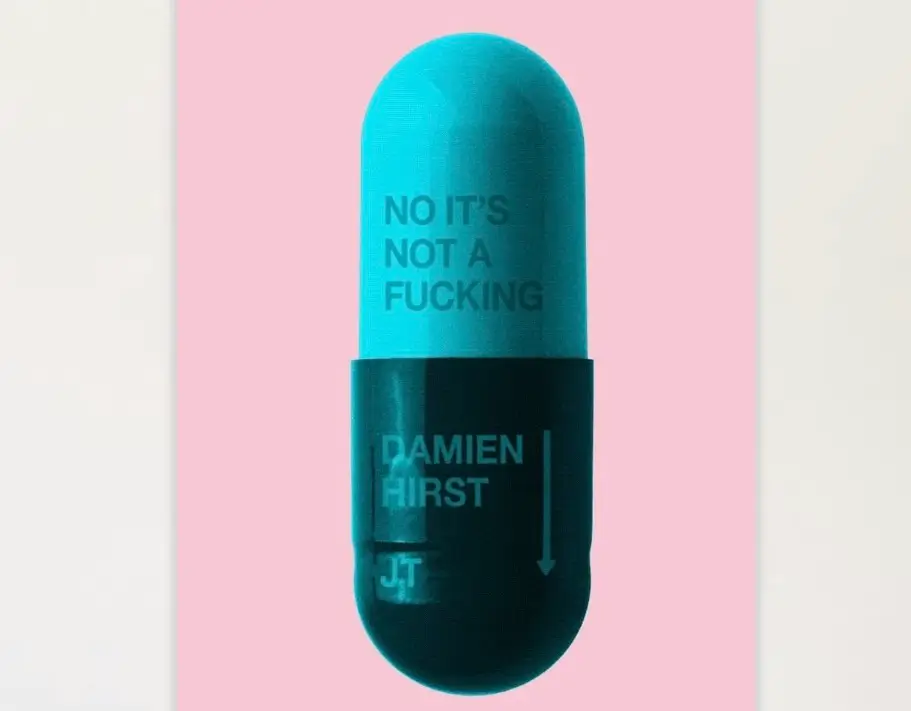Luciano Sanchez’s Street Lords ‘Pink Panther’ (2025) is a striking reinterpretation of one of pop culture’s most familiar icons. Where the Pink Panther has traditionally embodied sly humor, smoothness, and cartoonish elegance, Sanchez reimagines the character through the lens of contemporary street culture—gritty, defiant, and steeped in urban symbolism. Executed in acrylic on canvas, the work measures 40 x 40 cm, a relatively intimate scale that belies the heavy visual and cultural weight the figure carries.
At the center of the composition sits the Pink Panther, no longer the slick animated feline of childhood nostalgia but a hardened street lord. Slouched on a graffiti-tagged throne, the character bears an expression that is equal parts weary and intimidating. Tattoos crawl across his arms, neck, and torso, inscriptions of phrases and symbols that belong to the visual language of urban rebellion. The body is muscular, scarred, and marked, a canvas within the canvas, carrying layers of lived experience. Sanchez emphasizes this corporeal intensity by rendering the Panther with thick brushwork, exaggerated musculature, and shadowy tones that contrast against the slick pink surface audiences might expect from the original cartoon figure.
The details are loaded with cultural commentary. On the Panther’s feet are red-and-white Nike sneakers—streetwear emblems that anchor the figure in today’s youth and hip-hop culture. The cigarette dangling from his paw adds a touch of menace, evoking both self-destruction and cool nonchalance. The green throne behind him, covered in graffiti tags such as “OBEY” and “LOST BOY,” alludes to the street as both domain and prison. By seating the Panther on this throne, Sanchez crowns him not as a royal of fantasy but as a ruler of the streets, elevated and yet confined within the codes of survival and defiance.
The background, a shadowy urban wall sprayed with graffiti, serves not as decoration but as an extension of the Panther’s psyche. The words and tags scrawled across it speak to subcultures, collectives, and resistance, embedding the character within a broader community of urban identities. The throne and Panther appear illuminated against this dark backdrop, making the figure emerge like a saint in a devotional painting—except here, sanctity is replaced by rebellion, and the aura is born not from divine light but from the flickering glow of neon alleys and graffiti-painted corners.
What Sanchez achieves is more than parody or pop revision. Street Lords ‘Pink Panther’ interrogates the ways cultural icons shift meaning when relocated from mainstream entertainment into subcultural contexts. By bringing the Panther into the aesthetics of graffiti, sneakers, and lowbrow art, Sanchez asks viewers to reconsider how identity, power, and rebellion are coded into imagery. The work blurs the line between nostalgia and critique, transforming a once-playful icon into a hardened figure of resistance.
Ultimately, the painting is both humorous and unsettling, familiar yet strange. It exemplifies the ethos of the Street Lordsseries: to transform beloved characters into urban monarchs, gritty avatars of a world where cartoons grow up, inherit scars, and sit uneasily on thrones of graffiti and smoke.
View this post on Instagram
No comments yet.








